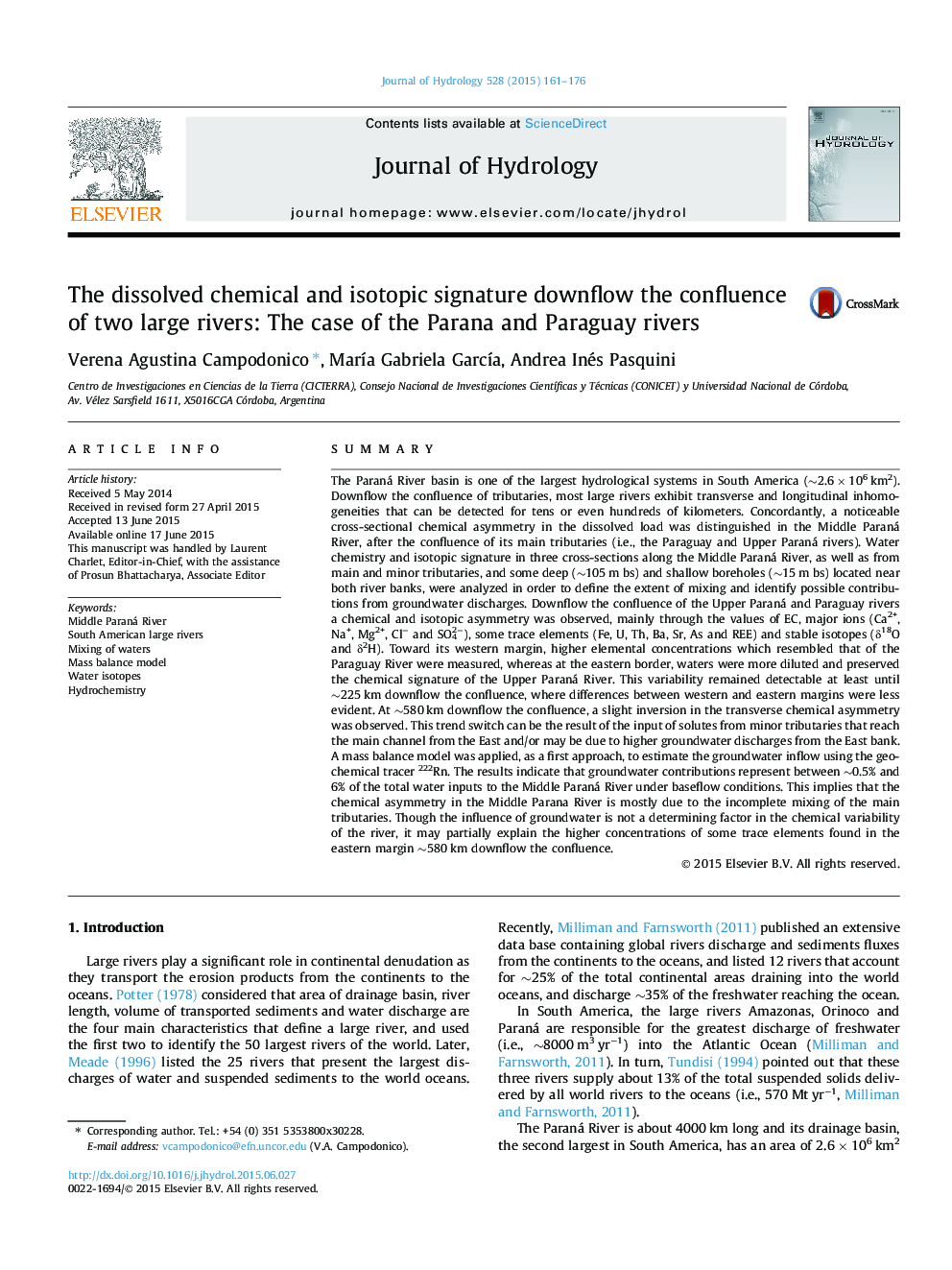| کد مقاله | کد نشریه | سال انتشار | مقاله انگلیسی | نسخه تمام متن |
|---|---|---|---|---|
| 6410883 | 1629922 | 2015 | 16 صفحه PDF | دانلود رایگان |
- A transverse chemical and isotopic asymmetry is observed in the Middle Paraná River.
- The asymmetry is due to the incomplete mixing of the Upper Paraná and Paraguay rivers.
- Groundwater inputs represent between 0.5% and 6% of the total river discharge.
SummaryThe Paraná River basin is one of the largest hydrological systems in South America (â¼2.6 Ã 106 km2). Downflow the confluence of tributaries, most large rivers exhibit transverse and longitudinal inhomogeneities that can be detected for tens or even hundreds of kilometers. Concordantly, a noticeable cross-sectional chemical asymmetry in the dissolved load was distinguished in the Middle Paraná River, after the confluence of its main tributaries (i.e., the Paraguay and Upper Paraná rivers). Water chemistry and isotopic signature in three cross-sections along the Middle Paraná River, as well as from main and minor tributaries, and some deep (â¼105 m bs) and shallow boreholes (â¼15 m bs) located near both river banks, were analyzed in order to define the extent of mixing and identify possible contributions from groundwater discharges. Downflow the confluence of the Upper Paraná and Paraguay rivers a chemical and isotopic asymmetry was observed, mainly through the values of EC, major ions (Ca2+, Na+, Mg2+, Clâ and SO42â), some trace elements (Fe, U, Th, Ba, Sr, As and REE) and stable isotopes (δ18O and δ2H). Toward its western margin, higher elemental concentrations which resembled that of the Paraguay River were measured, whereas at the eastern border, waters were more diluted and preserved the chemical signature of the Upper Paraná River. This variability remained detectable at least until â¼225 km downflow the confluence, where differences between western and eastern margins were less evident. At â¼580 km downflow the confluence, a slight inversion in the transverse chemical asymmetry was observed. This trend switch can be the result of the input of solutes from minor tributaries that reach the main channel from the East and/or may be due to higher groundwater discharges from the East bank. A mass balance model was applied, as a first approach, to estimate the groundwater inflow using the geochemical tracer 222Rn. The results indicate that groundwater contributions represent between â¼0.5% and 6% of the total water inputs to the Middle Paraná River under baseflow conditions. This implies that the chemical asymmetry in the Middle Parana River is mostly due to the incomplete mixing of the main tributaries. Though the influence of groundwater is not a determining factor in the chemical variability of the river, it may partially explain the higher concentrations of some trace elements found in the eastern margin â¼580 km downflow the confluence.
Journal: Journal of Hydrology - Volume 528, September 2015, Pages 161-176
